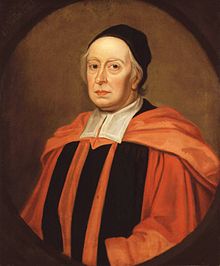Makutu ~ http://www.dictionary.com/browse/makutu
From Wikipedia, the free encyclopedia
Mākutu in the Māori language of New Zealand means "witchcraft", "sorcery", "to bewitch"; and also a "spell or incantation".[1][2] It may also be described as a belief in malignant occult powers possessed by certain people.
Elsdon Best (1859-1931) portrayed the belief in mākutu as "universal and prominent in pre-European times", stating that it acted as "a disciplinary force in the old days; it was one of the substitutes for civil law that preserved order in a Māori community".[3] Best noted that the effectiveness of mākutu was heightened by the fact that it could be carried out in secret; the element of uncertainty produced caution on the part of those who might otherwise transgress the laws of the community. It was widely believed[by whom?][citation needed]that those expert in mākutu were able to use the art to kill people.[citation needed] But there were limits on their freedom to act: should an irresponsible practitioner of the dark arts become a nuisance to a tribe, the solution to the problem simply involved killing the errant magician without delay. The training undergone by an apprentice was long and difficult, involving secret rituals and tests.[3]
An October 2007 mākutu-lifting in the Lower Hutt suburb of Wainuiomata led to the death by drowning of a woman and the hospitalisation of a teen, allegedly due to attempts to remove such a curse.[4]
MEDICINE AMONGST THE MAORIS, IN ANCIENT AND MODERN TIMES
MAKUTU OR WITCHCRAFT
MAKUTU or WITCHCRAFT. http://nzetc.victoria.ac.nz/tm/scholarly/tei-BucMedi-t1-body-d1-d5.html
Makutu was the second fruitful source of disease. In the early days it may have been a useful weapon in the hands of the tohungas. As they were the learned section of the community, the fear inspired by the dread of makutu materially helped them in governing the tribe. The modus operandi we will describe but reserve all explanation until the ancient system of medicine has been dealt with. Makutu was the power of slaying people by calling up familiar spirits by means of incantation. It was amongst the subjects learnt in the House of Learning, though not universally, for all tohungas did not possess the power of makutu. In fact the "tohunga makutu" though feared was somewhat despised and condemned for his evil practises. The Maori as a warlike race looked upon fame in the battlefield as the highest honour and the cowardly method of killing one's enemy secretly by means of incantations was execrated and condemned as murder. There is an old proverb which runs:-
Mata rakau e taea te karo,
Mata rerepuku e kore e taea.
(A weapon made of wood can be (seen and) parried, but the weapon which strikes unseen (makutu) cannot be parried,).
Mata rerepuku e kore e taea.
(A weapon made of wood can be (seen and) parried, but the weapon which strikes unseen (makutu) cannot be parried,).
The practice of makutu was often in the hands of old women warlocks who had some familiar spirit of the larvae or lemur type. The action of makutu upon the individual afflicted was similar to that in the preceding section. In the case of disease, the atua punished the transgressor of tapu, whilst in makutu the atua also afflicted the individual but it was in obedience to the command of a witch or wizard. Thus in cases of theft the power was often requisitioned to punish the thief. Any transgression against the community might be punished in a similar way. The methods of procedure vary PAGE 37but they all aim at destroying the "hau" or vital principle in man. Thus in the most common method, where the subject to be bewitched, was or course not present at the secret ceremony, it was necessary to have some material representation of the 'hau' to operate upon. This as already pointed out was the "ohonga". It could be some portion of wearing apparel, a look of hair, a remnant of food or even anything that the subject had touched such as a few grains of earth or sand taken from one of his footprints. In connection with this fear of leaving facilities for obtaining the ohonga the Maoris took great precautions. The "purenga" or place where the hair of a chief was cut, was tapu and guarded by atuas who would attack anyone tampering with the spot. The mass of the people would not leave their cut hair lying about but would carefully bury or burn it, of course never in a cooking-fire. I have seen my own mother carefully conceal any combings from her head. In this procedure there are two ideas involved, tapu and the fear of makutu. Great care was taken of extracted teeth. With children there was a ceremony of concealing any milk teeth in the fork of a growing tree to ensure the growth of permanent teeth and also I am sure to prevent their being used as an 'ohonga' for makutu. With food again great precautions were taken. In my youth I was warned not to leave any remnants of food lying about or even to expectorate in public places lest I should fall a victim to makutu. For a similar reason defaecation near the houses was carefully avoided and children specially warned against it. This helped to make all go to the public privy which had its own supernatural guardians to prevent anyone obtaining an ohonga for the purposes of makutu. It will be easily seen that many of these observances are useful from a health as well as a social point of view and used as a restraining influence by a worthy priesthood served a useful purpose. But neolithic tohungas were no better than the witches and wizards of civilised times. They PAGE 38used their power against personal enemies and they could be bought over by presents to remove the enemies of others. Some tribes were especially addicted to this practice and used makutu for the more pleasure of showing thir power and inspiring fear. Two coastal tribes, the Puketapu of Taranaki and the tribe inhabiting Tuparoa on the East Coast, bewitched the footprints of all strangers who passed along the sea-beach forming the sea-boundary of their territories. The mortality amongst travellers became so high, that people passing those dread sands selected the time when the tide was flowing in. By walking along in the edge of the sea they ensured the effacement of their footprints by the in-coming tide and so escaped death.
The ohonga having been obtained was subjected to the appropriate incantations. The incantations I have in my notes were obtained from a man of the Ngati-Porou tribe in 1867. He was tried by a tribunal of his tribe, admitted that he had killed by makutu and his incantations were copied down. The first incantation was repeated when seizing the ohonga and ran:-
Whakahopu ringa e Aitu,
Whakahopu ringa e tangata.
Whakahopu ringa e tangata.
Lay hold Oh Death
Lay hold Oh man.
Lay hold Oh man.
The ohonga, whilst other incantations were being repeated, was wrapped up in a piece of reed grass or flax and taken to some secluded spot near a stream where a hole was dug. At this stage, the spiritual form of the victim, the wairua, would appear and be recognised and the diagnosis was complete in cases of theft or crime. On the completion of the hole, according to this Ngati-Porou version, whilst the priest was repeating the words:-
a particular bronzed fly appeared and flew into the prepared hole. The priest with a sudden movement, dashed a sod over the hole, imprisoning or slaying the fly and at the same time repeating the final words of death:-Rangahua, here thou art,
Kneel within,
Crouch within,
Lie stretched out within,
Here thou art,
Tamumu te rango,
Totoro te iro.
Totoro te iro.
The blow-flies buzz,
The maggots crawl.
The maggots crawl.
If the fly escaped, the victim would escape but If it were killed, he was a dead man. This use of the ohonga or obtaining some material object upon which to direct incantations, resembles the action of Scotch witches who to the tune of incantations destroyed clay or waxen effigies to cause the death of those thus represented, or upset a cockle-shell floating in a basin of water to cause a shipwreck. The civilised or Scotch system is not clear to the Maori mind. It seems to rely upon the primitive idea that like affects like. The Maori system, where the ohonga or material representation definately impregnated with the hau or vital essence of man was destroyed, has a connection all through and seems a more thought-out system. This hau of man stands in a somewhat similar relation to man that tapu does to the gods but the former was passive, the latter active. A man touching anything communicated to it some of his hau. It could thus be used as an ohonga and the hau of the person destroyed. Tapu was communicated in a similar way, but it PAGE 40killed. The tapu person had no fear of his human hau being taken from the impregnated ground where he had sat for his supernatural tapu had also been communicated to the spot. He had left a powerful anti-toxin on the place. The lesser person who could not rely so much upon the protective influence of tapu, could, when amomgst strangers, by the correct phrase remove his hau from where he had sat, in a similar way to that in which the sacred chief removed his tapu. In the for case this was done lest the passive hau should be bewitched and in the latter, lest the potential tapu should be converted into kinetic atua-biting disease by an act of desecration.
There are many variations of the above method. One was by directly spurning some dust over the victim. This was known as "rehu". Some cases are recorded, where the ohonga does not seem to have been used but the victim was slain at a distance.
A common method was to makutu a certain spot or certain materials. Thus a high chief who had been insulted by a neighbouring family was not strong enough to punish them in battle. He bewitched the
a stone, placed it in the centra of the main path to his village and left the district. Every one whose foot touched that stone died. The corner stones marking the boundaries of a cultivation were sometimes bewitched to prevent their removal. Thus the biblical warning "cursed be he that remove th his neighbor's land-mark" was literally fulfilled. Food was often bewitched that those who partook thereof might die. When the descendants of Tangaroa-Mihi were unable to defeat Ngati-tama in battle, they bewitched some red ochre and sent it as a present to the hitherto invincible sons of Tama. These warriors smeared their faces with the red ochre ere offering battle and as a result of the makutu were slain in battle and their tribe overthrown.
a stone, placed it in the centra of the main path to his village and left the district. Every one whose foot touched that stone died. The corner stones marking the boundaries of a cultivation were sometimes bewitched to prevent their removal. Thus the biblical warning "cursed be he that remove th his neighbor's land-mark" was literally fulfilled. Food was often bewitched that those who partook thereof might die. When the descendants of Tangaroa-Mihi were unable to defeat Ngati-tama in battle, they bewitched some red ochre and sent it as a present to the hitherto invincible sons of Tama. These warriors smeared their faces with the red ochre ere offering battle and as a result of the makutu were slain in battle and their tribe overthrown.
Makutu was thus also used to prevent the mana of a par-PAGE 41ticular person or family from becoming too great. Jealousy aroused by the fame of a warrior in battle, or the power of a chief in the tribal council, in the entertainment of visitors, and other actions which caused his fame to spread, might lead to makutu being employed, often by another branch of the family who were being outshone in military or civil fame. The makutu besides being directed against the individual might be directed against the family as a whole. In the latter case the family would become less productive. Instead of families of seven or eight or more, the children would die and leave perhaps a solitary survivor. The disease was therefore hereditary and the condition was known as a "whare ngaro", a lost house, that is, that particular house or family was becoming extinct. There are many families at the present time in this condition. The sub-tribe to which I belong, the "Ngati-aurutu" is now represented by two others besides myself. The other two are old men but they have no heirs. I have been married for four years without producing issue. My family, therefore, from the Maori view point is a typical 'whare ngaro' which a generation or two back was doomed to extinction by some old tohunga whose ban has never been properly removed. In connection with this, the incantations were generally repeated over some object such as a stone which was then carefully concealed. As long as this bewitched object remained concealed, death through wasting disease caused by the demon evoked would be ever present amongst the members of the family against which the makutu was directed.
The "Ahitaitai" is an example of a commingling of makutu and tapu. When the child of a chief of note had its navel cord concealed in a certain spot, that spot became tapu But in order to give the tapu a special virulence a certain ceremony was performed in which a sacred fire, the "ahitaitai" in this case, was used. The spot was bewitched or a special guardian left in charge. Anyone trespassing was punished severely. The Hon. A. T. Ngatainformed me of an ahitaitai in his family. It was located near the NativePAGE 42school of the district. The European school-teacher was warned of its proximity, but with the unbelief of his race, he included the spot in a fowl-run. He and his family partook of the eggs, and curious to say, were afflicted with violent abdominal pains and developed chronic diarrhoea of great obstinacy. The health of his family continued so bad that we had to leave the district. Thus was the ahitaitai vindicated upon the unbelieving white man.
Tapu and makutu, then, are the two great causes, according to the Maori, of disease and death. In reality there is only one cause, the gods who punish sin, not against the laws of public health, but against the religious enactments of the race and who obey the evil behests of man.






 .
.


